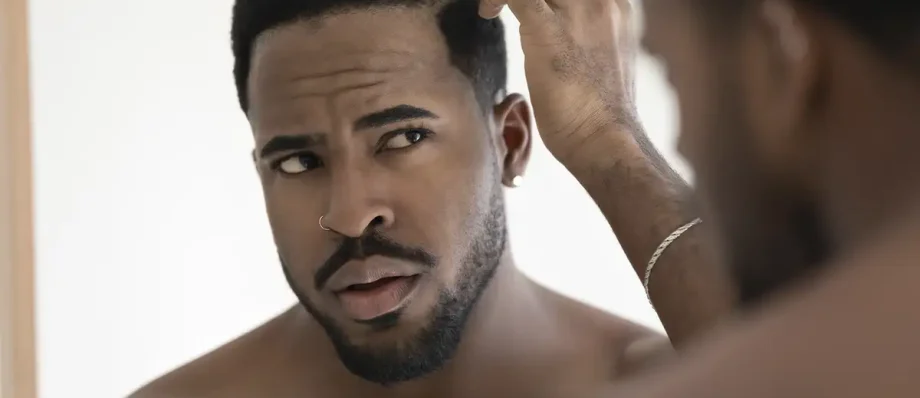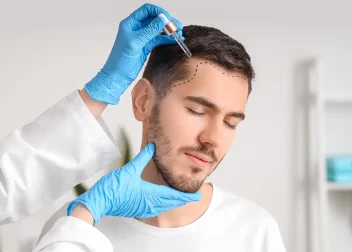Afro Hair Transplant in Turkey
What is Afro Hair Transplant?
Afro hair, known as one of the most fashionable hair types, grows on Black men and women with African and Caribbean genes. Afro hair is coarse and curly. Curls most often start from the scalp and continue in small curls to the tip of the follicle. This characteristic gives the hair a more voluminous appearance.
Afro hair is normally so dry and spongy that, once it is grown out, it does not bend downwards. This type of hair is one of the most beautiful, but also the most difficult for hair transplant treatment. According to the doctors, in most Afro hair, the curls continue into the roots under the skin, so extracting the grafts requires exceptional care and skill.
Afro hair transplant is a hair transplant method that people of African origin can apply when they have hair loss problems. Afro hair is different from other hair types and therefore, the hair transplant method also differs.
What Is Afro Hair?
Afro hair is the hair type owned by individuals of African origin. This hair type has a curly, wavy structure and is thick and stiff. Unlike other hair types, the hair under the skin is also curly. Therefore, Afro hair transplant is more complex than other types of hair transplant.
The Characteristics of Afro Hair
African-type hair (also known as curly or frizzy hair) is characterized by very tight, distinct C-shaped curls. The hair follicles are not visible, as they tend to curve under the skin. For this reason, transaction rates on curly and afro hair tend to be higher than on straight hair. Transaction refers to the unintentional cutting of a hair follicle during transplant. It can occur during the extraction and implantation stages of a graft.
Transctions most often occur when a surgeon removes grafts from the back or side of your skull: the blade used for extraction permanently damages the hair follicles, which can no longer be used for transplant. Transections can also occur when the pressure exerted on the scalp during hair transplant is too great, or due to worn or unsuitable tools.
Hair transplants for frizzy hair require in-depth knowledge and understanding of both the patient’s needs, and the specific techniques needed for this type of transplant. That is why it is vital to conduct your transplant in competent establishments with solid experience in this field.
Hair Transplant Methods for Afros
There are several reliable hair transplant techniques routinely performed today. The procedure used depends on the doctor you choose, the type of baldness you suffer from and your personal expectations about your Afro hair transplant.
Follicular Unit Extraction (FUE)
FUE hair transplants involve extracting grafts – groups of 1 to 4 hair follicles – from the back or sides of your head. These grafts are then implanted in bald or balding areas of your head. The advantage of the FUE technique is minimal scarring and rapid healing, usually lasting two weeks after treatment.
Follicular Unit Transplantation (FUT)
Developed in the late 1950s, FUT is performed under local anesthetic. This grafting procedure involves removing a strip of skin from the back or sides of your skull. The strip is then divided into smaller grafts, which are implanted in bald or balding areas of the skull. This method leaves patients with a permanent scar and requires a few weeks’ convalescence after surgery.
Direct Hair Implantation (DHI)
DHI is another widespread, minimally invasive hair transplant procedure. This technique uses a specialized tool known as the “Choi” implanter pen, which effectively restores a denser head of hair to balding areas. The Choi Implant Pen enables hair follicles to be implanted one by one very quickly after extraction. This reduces the risk of damage to the grafts caused by too much time spent outside the body.
Hair transplant methods vary, as there is no single approach to Afro hair transplants and no “typical” patient.
Afro Hair Transplant: What You Should Know
Afro hair transplants are quite delicate procedures, requiring skilled and experienced doctors and equipment. Success rates for frizzy hair transplants are particularly good. However, to achieve a level of success and satisfaction equivalent to that of a more conventional transplant, it is necessary to devote a little more time and care. It’s important to bear in mind that Afro hair is curly and thick: it offers more coverage and density. For this reason, it is likely that your surgeon will transplant less hair than for a straight hair transplant, for example.
What Type of Afro Hair Do I Have?
There are many types of Afro hair, and deciding your specific hair type can help you better understand how to care for and style your hair. The most widely used classification system for Afro hair types was created by stylist Andre Walker, who classifies hair types from 1A (straight hair) to 4C (oily hair). Here are the different
Afro hair types:
Type 1: Straight hair, which is fine and tends to be greasy.
Type 2: Wavy hair, which has a slight wave and can range from fine to coarse.
Type 3: Curly hair, which has a more defined curl pattern and can range from loose to corkscrew curls.
Type 4: Curly hair, which has a very tight curl pattern and can range from small curls to very tight curls.
Each hair type can have added variations in texture, porosity, and thickness. Knowing your hair type can help you choose the products, styles, and hair care products best suited to your hair. You can consult a hairdresser or dermatologist specializing in Afro hair to figure out your hair type and get personalized recommendations on how to care for your hair.
Preoperative Instructions for Afro Hair Transplants
Before undergoing hair transplant surgery in Turkey, the patient must take several important pre-operative steps to prepare for the procedure:
Consultation: The first step is to make an appointment for a consultation with a qualified surgeon experienced in hair transplantation. During the consultation, the surgeon will assess the patient’s hair loss pattern, hair texture and overall scalp health to figure out if the patient is a suitable candidate for an afro hair transplant.
Medical history and medications: Patients must provide the surgeon with a complete medical history and a list of all medications they are taking, including over the counter and prescription medications. Some medications, such as anticoagulants, may need to be temporarily stopped prior to surgery to reduce the risk of excessive bleeding.
Blood tests: Some surgeons may require blood tests prior to surgery to ensure that the patient is healthy enough to undergo the procedure. Prior to hair transplantation, a blood test is performed at Clinique Sule.
Pre-operative instructions: Patients will receive specific pre-operative instructions from their surgeon, including avoiding certain foods, supplements and medications, and quitting smoking several weeks before the procedure.
Shampooing: Patients may be asked to wash their hair the day before surgery to ensure that the scalp is clean and free of any oils or products that could interfere with the transplant process.
By following these pre-operative steps, patients can contribute to the success and safety of the Afro hair transplant procedure.
Post-Operative Instructions for Afro Hair Transplant
- To reduce swelling and discomfort, you should sleep with your head elevated on pillows for the first few nights after surgery.
- Follow the post-operative instructions provided by your surgeon, which may include washing your hair with a mild shampoo and avoiding strenuous activity for a period of time.
- Avoid exposing the transplanted area to direct sunlight or extreme temperatures for several weeks after surgery. This could damage the newly transplanted hair follicles and slow down the healing process.
- Take any medication prescribed by your surgeon, such as painkillers or antibiotics, as directed.
- Eat a healthy, balanced diet rich in vitamins and minerals to support the healing process and promote hair growth.
- Avoid smoking and alcohol consumption for at least two weeks after the procedure, as these can interfere with the healing process.
- Avoid wearing hats or tight hairstyles for at least one week after the procedure, as these can put pressure on the newly transplanted hair follicles.
- Schedule follow-up appointments with your surgeon to check the healing process and evaluate hair regrowth after ten days.
- By following these follow-up tips, patients can contribute to the success and safety of the afro hair transplant procedure and promote best hair growth.
Afro Hair Transplant in Turkey
For those with Afro-type hair, Turkey is a good country. Turkey, which has a world reputation in health tourism, especially in the field of hair transplant, has made a positive name for itself.
Hair transplant in Turkey is preferred by people from many foreign countries due to its understanding of both affordable price and quality service. Since it offers an “all-inclusive package” opportunity, as well as other countries, people can both be treated and have a holiday. Patients who want to do two things at the same time generally prefer hair transplant in Istanbul.
Hair Transplant Cost for Afro Hair Type
Hair transplant cost varies according to the experience of the doctor, the reputation of the clinic, and the patient’s hair condition, so it is not possible to say an exact price. As a result of your research, you can contact the clinics that are suitable for you and benefit from both free consultation and affordable price opportunities.


